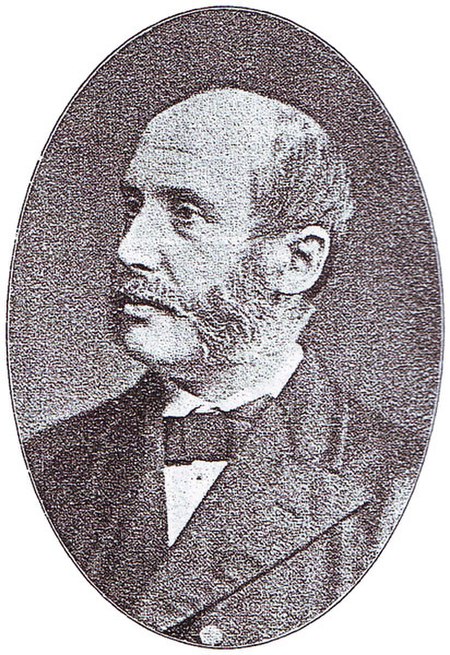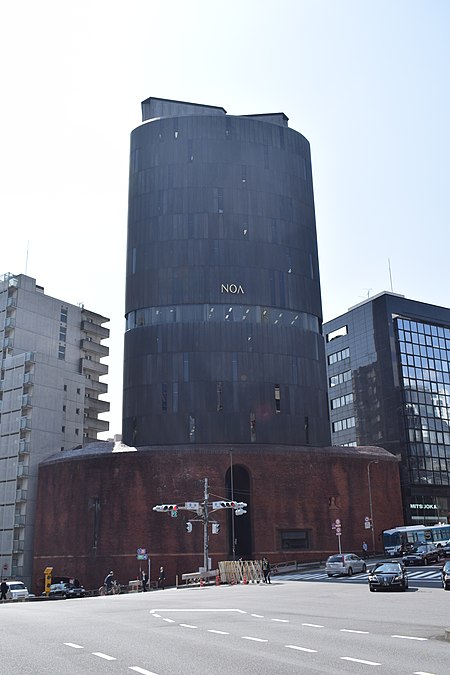Laurence Oliphant (author)
| |||||||||||||||
Read other articles:

Season for the Major League Baseball team the New York Yankees Major League Baseball team season 2006 New York YankeesAmerican League East ChampionsLeagueAmerican LeagueDivisionEastBallparkYankee StadiumCityNew YorkRecord97–65 (.599)Divisional place1stOwnersGeorge SteinbrennerGeneral managersBrian CashmanManagersJoe TorreTelevisionWWOR-TVYES Network(Michael Kay, Jim Kaat, Ken Singleton, Bobby Murcer, Paul O'Neill, David Justice, Al Leiter, John Flaherty)RadioWCBS (AM)(John Sterling, Suzyn…

EmpereurLa Bataille pour DuneDéveloppeur Westwood StudiosÉditeur EA GamesRéalisateur inspiré de DuneCompositeur Frank Klepacki, David Arkenstone, Jarrid Mendelson (d)Date de sortie 14 juin 2001Franchise DuneGenre Stratégie en temps réelMode de jeu Un joueur 2 à 8 joueurs en réseau localPlate-forme WindowsMoteur W3D (Westwood 3D)Version 1.09 le 1er octobre 2001[1]Évaluation PEGI 16 (d)modifier - modifier le code - modifier Wikidata Empereur : La Bataille pour Dune (Emperor: Battle f…

Pour les articles homonymes, voir Frisch. Edmond de FelsEdmond de FelsFonctionPrésidentSociété des amis de Versailles1943-1951Alexandre MillerandPierre de Cossé-BrissacTitre de noblesseComte romainBiographieNaissance 3 juillet 1858MarseilleDécès 29 mars 1951 (à 92 ans)8e arrondissement de ParisNationalité françaiseActivité DiplomateEnfants André de FelsHubert Frisch de Fels (d)Anne Marie Frisch de Fels (d)Edmée de La RochefoucauldAutres informationsPropriétaire de Château…

1992 single by Jade Don't Walk AwaySingle by Jadefrom the album Jade to the Max ReleasedNovember 23, 1992GenreNew jack swing[1]Length 4:44 (album version) 3:37 (with intro edit) LabelGiantSongwriter(s) Vassal Benford III Ronald Spearman Producer(s) Vassal Benford III Ronald Spearman Jade singles chronology I Wanna Love You (1992) Don't Walk Away (1992) One Woman (1993) Music videoDon't Walk Away on YouTube Don't Walk Away is a song by American R&B group Jade, released in November 199…

French politician Christophe de Chabrol de CrouzolBorn(1771-11-16)16 November 1771Riom, Puy-de-Dôme, FranceDied7 October 1836(1836-10-07) (aged 64)Château de Chabannes, Paslières, Puy-de-Dôme, FranceNationalityFrenchOccupationPoliticianKnown forMinister of the Navy Christophe André Jean de Chabrol de Crouzol (16 November 1771 – 7 October 1836) was a French politician who served in the administration of Napoleon, then adhered to the Bourbon Restoration in 1814. As Prefect of …

Tabletop role-playing game supplement Guildmasters' Guide to RavnicaRules requiredDungeons & Dragons, 5th editionCharacter levels1-2Campaign settingMultiverse (Magic: The Gathering), RavnicaAuthorsWizards RPG TeamFirst publishedNovember 20, 2018Pages256ISBN978-0-7869-6659-2 Guildmasters' Guide to Ravnica is a sourcebook that details the Ravnica campaign setting for the 5th edition of the Dungeons & Dragons fantasy role-playing game published in November 2018.[1] The world of Ravn…

BacuagMunisipalitasNegara FilipinaProvinsiSurigao del Norte Bacuag adalah munisipalitas yang terletak di provinsi Surigao del Norte, Filipina. Pada tahun 2010, munisipalitas ini memiliki populasi sebesar 13.663 jiwa dan 2.790 rumah tangga. Pembagian wilayah Secara administratif Bacuag terbagi menjadi 9 barangay, yaitu: Cabugao Cambuayon Campo Dugsangon Pautao Payapag Pungtod Santo Rosario Pranala luar Bacuag.com - Province of Surigao del Norte Diarsipkan 2008-04-15 di Wayback Machine. Philippine…

Lake in the country of Kazakhstan Kishi-KaroyКіші Қараой / Киши-Карой2021 Sentinel-2 image of the lake in MayKishi-KaroyLocationIshim PlainWest Siberian PlainCoordinates54°02′N 71°20′E / 54.033°N 71.333°E / 54.033; 71.333TypeendorheicBasin countriesKazakhstanMax. length12.7 kilometers (7.9 mi)Max. width12.1 kilometers (7.5 mi)Surface area102 square kilometers (39 sq mi)Shore length173.4 kilometers (45.6 mi)Surface e…

Revolver Kerr's Patent Revolver TypeRevolverPlace of originUnited KingdomService historyUsed byConfederate States of America, United Kingdom, Canada, AustraliaWarsNew Zealand wars, American Civil War, Australian frontier wars, Fenian raids, Red River Rebellion, Boshin WarProduction historyDesignerJames KerrDesigned1855ManufacturerLondon Armoury CompanyUnit cost$18.00Produced1859–1866SpecificationsLength12.25 in (311 mm)Barrel length5 in (130 mm)Cali…

Station of the Tehran Metro Mahdiyeh Metro Stationایستگاه مترو مهدیهTehran Metro StationGeneral informationLocation Valiasr Street- Molavi Street, District 11, Tehran, Tehran CountyTehran Province, IranOperated byTehran Urban and Suburban Railways Organization (Metro)HistoryOpened23 Tir 1397 H-Sh (14 July 2018)Services Preceding station Tehran Metro Following station Moniriyehtowards Ghaem Rahahantowards Azadegan Meydan-e Mohammadiyehtowards Basij Helal-e Ahmartowards Meydan-e Sa…

Railway line in Japan This article needs additional citations for verification. Please help improve this article by adding citations to reliable sources. Unsourced material may be challenged and removed.Find sources: Hankyu Takarazuka Main Line – news · newspapers · books · scholar · JSTOR (December 2013) (Learn how and when to remove this message) Hankyu Takarazuka Main LineA 6000 series EMU on a Local service for Hibarigaoka-HanayashikiOverviewNative na…

Church in Strängnäs, SwedenSträngnäs CathedralSträngnäs CathedralSträngnäs CathedralShow map of SödermanlandSträngnäs CathedralShow map of Sweden59°22′32.16″N 17°02′04.56″E / 59.3756000°N 17.0346000°E / 59.3756000; 17.0346000LocationSträngnäsCountry SwedenDenominationChurch of SwedenPrevious denominationRoman CatholicHistoryStatusCathedralFounded1260DedicationSt Peter & St PaulConsecrated1291ArchitectureFunctional statusActiveStyleGothicS…

Questa voce sull'argomento storici tedeschi è solo un abbozzo. Contribuisci a migliorarla secondo le convenzioni di Wikipedia. Georg Ludwig Voigt Georg Ludwig Voigt (Königsberg, 5 aprile 1827 – Lipsia, 18 agosto 1891) è stato uno storico e umanista tedesco. Professore dal 1861 al 1866 a Rostock e dal 1866 all'Università di Lipsia, fu il più significativo studioso dell'umanesimo italiano prima di Francesco de Sanctis e di Jacob Burckhardt. A lui, tra l'altro, si deve la coniazione del…

USAF Southern Air Division830th Air Division Cessna OA-37 and Cessna O-2A over Honduras in 1984Active1976–1992Country United States PanamaBranch United States Air ForceRoleCommand of regional air forcesPart ofTactical Air CommandDecorationsAir Force Outstanding Unit AwardAir Force Organizational Excellence AwardInsigniaAir Forces Panama emblem (Approved for Southern Air Division)[1][note 1]Military unit Air Forces Panama is an inactive United States Air Forc…

Эта статья — о фотографии как технике. О фотографии как искусстве см. История фотоискусства. Хронология основных событий в истории фотографии. Изобретения и открытия, оказавшие наиболее сильное влияние на развитие технологии. Старейшая сохранившаяся фотограф�…

駐日フィジー大使館Embassy of Fiji in Japan駐日フィジー大使館が入居しているノアビル(2019年)所在地 日本住所東京都港区麻布台2-3-5 ノアビル14F開設1981年1月大使フィリモネ・ワガバザ管轄 日本・ フィリピン・ ロシアウェブサイトfijiembassy.jp/ja/ 駐日フィジー大使館[1](英語: Embassy of Fiji in Japan)は、フィジーが日本の首都東京に設置している大使館である。在東京�…

Collezione Peggy Guggenheim UbicazioneStato Italia LocalitàVenezia IndirizzoPalazzo Venier dei Leoni, Dorsoduro 701 Coordinate45°25′50.99″N 12°19′53.54″E45°25′50.99″N, 12°19′53.54″E CaratteristicheTipoPittura, Scultura Intitolato aPeggy Guggenheim Istituzione1980 FondatoriPeggy Guggenheim Apertura1980 Visitatori381 374 (2022) Sito web Modifica dati su Wikidata · Manuale Il terrazzo sul Canal Grande L'ingresso del museo La Peggy Guggenheim Collection è un mus…

Генеральний військовий суд (Генеральний суд) — найвища судова установа Гетьманщини в 17-18 століттях. Суд виник під час національно-визвольної війни українського народу під проводом Богдана Хмельницького 1648-57 років. Підпорядковувався гетьманові. Розглядав справи про вб…

Public square in Samara, RussiaThe topic of this article may not meet Wikipedia's notability guideline for geographic features. Please help to demonstrate the notability of the topic by citing reliable secondary sources that are independent of the topic and provide significant coverage of it beyond a mere trivial mention. If notability cannot be shown, the article is likely to be merged, redirected, or deleted.Find sources: Kuybyshev Square – news · newspapers · book…

Radio message sent into space in 1974 Arecibo Message redirects here. For the 2009 Boxcutter album, see Arecibo Message (album). This is a demonstration of the message with color added to highlight its separate parts. The binary transmission sent carried no color information. The Arecibo message is an interstellar radio message carrying basic information about humanity and Earth that was sent to the globular cluster Messier 13 in 1974. It was meant as a demonstration of human technological achie…




